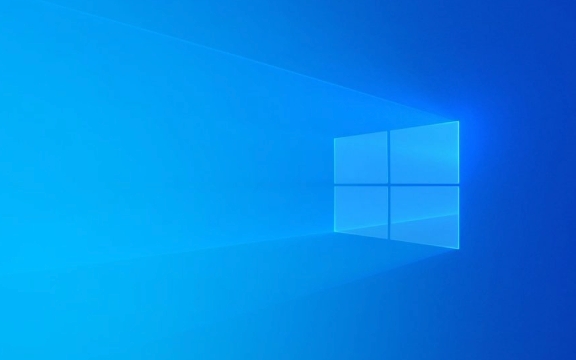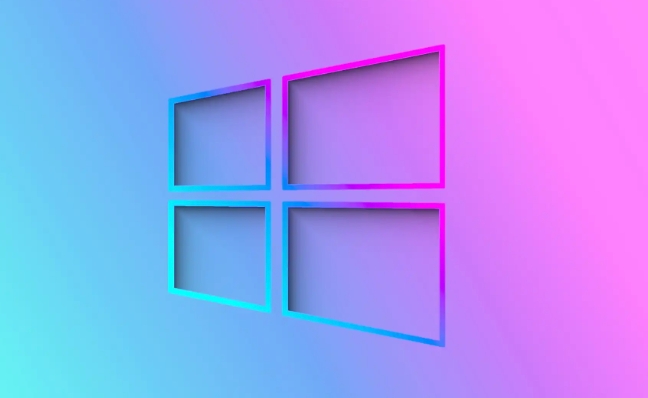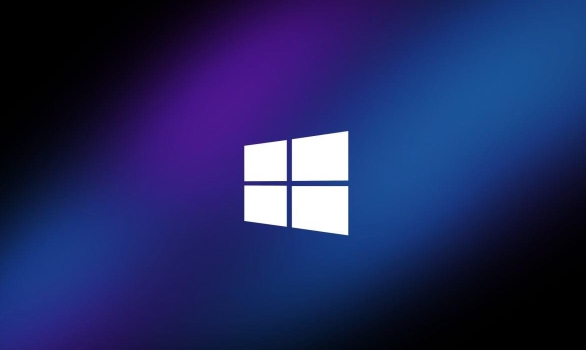If the Windows 11 application permissions cannot be saved, it may be caused by corruption of the user profile, abnormal application permission status, group policy or registry settings conflicts, or problems with the application itself. 1. First try to create a new local account to troubleshoot configuration files; 2. Reset app permissions by setting or PowerShell; 3. Check for entries in Group Policy and Registry that have mandatory default permission settings; 4. Update, reinstall, or replace the app version to troubleshoot the app itself. In most cases, the problem can be solved by following the steps to troubleshoot.

If your Windows 11 app permissions aren't saving, you're not alone. It's a frustrating issue where you change settings — like allowing an app to access the camera or microphone — only to find they reset after a reboot or when you reopen the app. The problem usually comes down to how Windows manages user profiles, app permissions, or system policies.

Let's break it down and cover what typically causes this and how to actually fix it.
Check for Corrupted User Profile
One common reason app permission changes don't stick is a corrupted user profile. Windows stores app-specific settings under your profile, and if that gets damaged, permissions might not save properly.

Here's what to try:
- Create a new local user account and check if the issue persists there.
- If the problem goes away, your original profile may be corrupt.
- You can either switch to the new account or attempt to repair the current one using tools like
net useror third-party utilities (though be cautious with those).
This doesn't always apply, but it's worth ruling out early since it's a known cause.

Reset App Permissions via Settings or PowerShell
Sometimes the app's permissions are just stuck in a bad state. Resetting them through Windows tools often helps.
Try these steps:
Go to Settings > Privacy & Security > For apps , then pick the app in question.
Toggle everything off and back on.
-
Alternatively, use PowerShell:
Get-AppXPackage -AllUsers | Foreach {Add-AppxPackage -DisableDevelopmentMode -Register "$($_.InstallLocation)\AppXManifest.xml"}This resets all app permissions and re-registers system apps, which can clear up glitches.
You might need to restart your PC afterward for changes to fully take effect.
Check Group Policy or Registry Settings
If you're on a managed device (like a work computer), group policy could be overriding your settings. Even on personal PCs, incorrect registry entries can mess with app permissions.
What to do:
- Press
Win R, typegpedit.msc, and go to Computer Configuration > Administrative Templates > Windows Components > App Privacy . - Make sure no policies are forcing default behaviors that override your choices.
- If you're comfortable editing the registry, look under
HKEY_LOCAL_MACHINE\SOFTWARE\Policies\Microsoft\Windows\AppPrivacy.
Changes here should be made carefully — a wrong edit can cause more issues than it fixes.
Update or Reinstall the Problematic App
Sometimes the issue isn't with Windows itself, but with the app. Especially if it's a third-party app, bugs in its code might prevent it from respecting or saving permission settings.
Try:
- Updating the app through the Microsoft Store.
- Uninstalling and reinstalling it.
- Using a different version of the app if available.
Some lightweight apps have simpler permission models, so switching might help avoid deeper system troubleshooting.
That's about it. Most of the time, it's either a profile issue, a glitch in the app registration, or something being forced by policy. None of these fixes are overly complicated, but they do require a bit of step-by-step checking.
The above is the detailed content of Fixing Windows 11 app permissions not saving. For more information, please follow other related articles on the PHP Chinese website!

Hot AI Tools

Undress AI Tool
Undress images for free

Undresser.AI Undress
AI-powered app for creating realistic nude photos

AI Clothes Remover
Online AI tool for removing clothes from photos.

Clothoff.io
AI clothes remover

Video Face Swap
Swap faces in any video effortlessly with our completely free AI face swap tool!

Hot Article

Hot Tools

Notepad++7.3.1
Easy-to-use and free code editor

SublimeText3 Chinese version
Chinese version, very easy to use

Zend Studio 13.0.1
Powerful PHP integrated development environment

Dreamweaver CS6
Visual web development tools

SublimeText3 Mac version
God-level code editing software (SublimeText3)
 How to Change Font Color on Desktop Icons (Windows 11)
Jul 07, 2025 pm 12:07 PM
How to Change Font Color on Desktop Icons (Windows 11)
Jul 07, 2025 pm 12:07 PM
If you're having trouble reading your desktop icons' text or simply want to personalize your desktop look, you may be looking for a way to change the font color on desktop icons in Windows 11. Unfortunately, Windows 11 doesn't offer an easy built-in
 Fixed Windows 11 Google Chrome not opening
Jul 08, 2025 pm 02:36 PM
Fixed Windows 11 Google Chrome not opening
Jul 08, 2025 pm 02:36 PM
Fixed Windows 11 Google Chrome not opening Google Chrome is the most popular browser right now, but even it sometimes requires help to open on Windows. Then follow the on-screen instructions to complete the process. After completing the above steps, launch Google Chrome again to see if it works properly now. 5. Delete Chrome User Profile If you are still having problems, it may be time to delete Chrome User Profile. This will delete all your personal information, so be sure to back up all relevant data. Typically, you delete the Chrome user profile through the browser itself. But given that you can't open it, here's another way: Turn on Windo
 How to fix second monitor not detected in Windows?
Jul 12, 2025 am 02:27 AM
How to fix second monitor not detected in Windows?
Jul 12, 2025 am 02:27 AM
When Windows cannot detect a second monitor, first check whether the physical connection is normal, including power supply, cable plug-in and interface compatibility, and try to replace the cable or adapter; secondly, update or reinstall the graphics card driver through the Device Manager, and roll back the driver version if necessary; then manually click "Detection" in the display settings to identify the monitor to confirm whether it is correctly identified by the system; finally check whether the monitor input source is switched to the corresponding interface, and confirm whether the graphics card output port connected to the cable is correct. Following the above steps to check in turn, most dual-screen recognition problems can usually be solved.
 Fixed the failure to upload files in Windows Google Chrome
Jul 08, 2025 pm 02:33 PM
Fixed the failure to upload files in Windows Google Chrome
Jul 08, 2025 pm 02:33 PM
Have problems uploading files in Google Chrome? This may be annoying, right? Whether you are attaching documents to emails, sharing images on social media, or submitting important files for work or school, a smooth file upload process is crucial. So, it can be frustrating if your file uploads continue to fail in Chrome on Windows PC. If you're not ready to give up your favorite browser, here are some tips for fixes that can't upload files on Windows Google Chrome 1. Start with Universal Repair Before we learn about any advanced troubleshooting tips, it's best to try some of the basic solutions mentioned below. Troubleshooting Internet connection issues: Internet connection
 Want to Build an Everyday Work Desktop? Get a Mini PC Instead
Jul 08, 2025 am 06:03 AM
Want to Build an Everyday Work Desktop? Get a Mini PC Instead
Jul 08, 2025 am 06:03 AM
Mini PCs have undergone
 How to clear the print queue in Windows?
Jul 11, 2025 am 02:19 AM
How to clear the print queue in Windows?
Jul 11, 2025 am 02:19 AM
When encountering the problem of printing task stuck, clearing the print queue and restarting the PrintSpooler service is an effective solution. First, open the "Device and Printer" interface to find the corresponding printer, right-click the task and select "Cancel" to clear a single task, or click "Cancel all documents" to clear the queue at one time; if the queue is inaccessible, press Win R to enter services.msc to open the service list, find "PrintSpooler" and stop it before starting the service. If necessary, you can manually delete the residual files under the C:\Windows\System32\spool\PRINTERS path to completely solve the problem.
 How to run Command Prompt as an administrator in Windows 10?
Jul 05, 2025 am 02:31 AM
How to run Command Prompt as an administrator in Windows 10?
Jul 05, 2025 am 02:31 AM
To run command prompts as administrator, the most direct way is to search through the Start menu and right-click "Run as administrator"; secondly, use the Win X shortcut menu to select "Command Prompt (Administrator)" or "Windows Terminal (Administrator)"; you can also open the run window through Win R and enter cmd and press Ctrl Shift Enter to force running as administrator; in addition, you can set shortcut properties to achieve automatic running as administrator. All the above methods require administrator permission and confirmation through UAC. Pay attention to security risks during operation.







